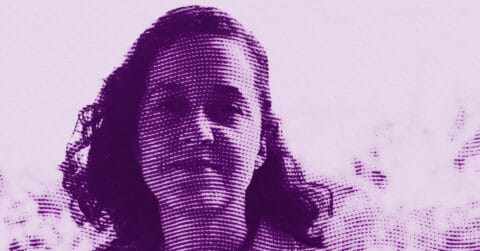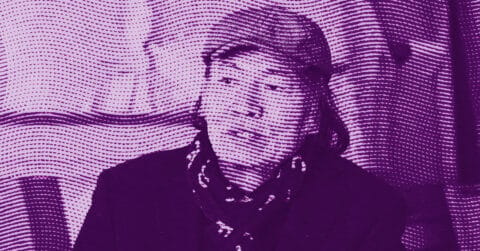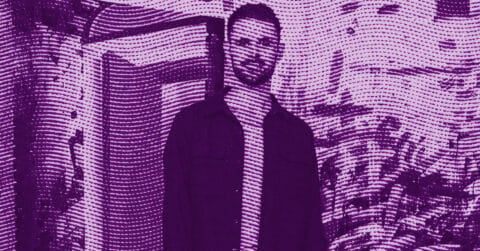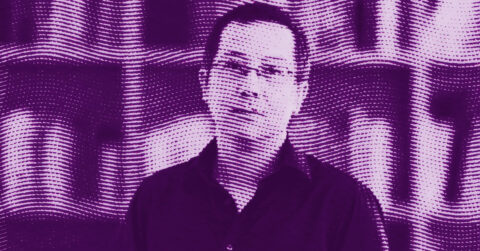Listen to me carefully, you bunch of snobs: while you bask in your aesthetic certainties and binary classifications, a man born in the periphery of Brasília silently disrupts the codes of contemporary representation. Antonio Obá, son of a gas delivery man and a cook, born in 1983 in Ceilândia, does not seek to please the international art market. He seeks to reconcile wounded bodies with their memory. And believe me, this ambition is worth all your speculations about the latest New York genius of the moment.
Trained in visual arts after a brief stint in advertising, Obá taught drawing for twenty years before dedicating himself entirely to his artistic practice. This trajectory is not incidental: it testifies to patience, slow maturation, and a refusal of careerist haste. Winner of the PIPA Prize in 2017, present in the collections of Tate Modern, the Pinault Foundation, and the Reina Sofía Museum, the Brazilian artist builds a body of work where painting, sculpture, installation, and performance dialogue with rare intensity. But what strikes immediately in his work is this ability to simultaneously evoke historical pain and spiritual hope, without ever falling into easy pathos.
Capoeira as the grammar of resistance
To understand Antonio Obá’s approach, one must first grasp what capoeira represents in the Afro-Brazilian imagination. This martial art disguised as dance is one of the most brilliant inventions of slave resistance. The chained bodies of slaves were able to create a language of combat that escaped the masters’ surveillance by hiding under the guise of a simple festive choreography. This founding duplicity, this ability to transform oppression into creative movement, permeates all of Obá’s practice.
Capoeira is not just a cultural reference in his work: it constitutes the structural principle. Like capoeiristas who move within the circle without ever touching, maintaining a permanent tension between potential attack and strategic retreat, Obá constructs his paintings in a precarious balance between violence and grace. His characters, asleep or as if under a spell, embody this suspension, that moment before movement where all possibilities remain open. Are they dead, dreaming, meditating? The artist refuses to decide, keeping the viewer in this fertile uncertainty which precisely characterizes the roda, that capoeira circle.
A dance historian might see in it an appropriation of contemporary performance codes. That would miss the point: Obá does not perform for the Western white cube; he actualizes a tradition of bodily resistance that dates back to the holds of slave ships. When in 2016 he created that scandalous performance where he scrapes a sculpture of the Virgin Mary made of white wax and covers his body with this powder, he was not engaging in gratuitous provocation. He accomplishes a gesture of spiritual capoeira: transforming the image of colonial domination into an identity ornament, turning the symbol of religious oppression into a material of bodily reappropriation.
This performance earned him such an outburst of hatred in Brazil that he had to exile himself for several months in Brussels. But again, the parallel with capoeira is clear: evasion is not flight; it is a tactical repositioning. The black body learns very early that it must navigate between blows, anticipate violence, calculate movements to survive. Obá transforms this historical necessity into an artistic method. His works are never straightforward: they circumvent, suggest, shift. They dance around their subject rather than confront it directly.
In his recent paintings, the characters seem to float in an indeterminate space, their bodies drawn with the precision that betrays years of observation and practice of academic drawing. But this technical mastery is immediately subverted by the introduction of disruptive elements: búzios (cowries) instead of eyes, bare tree branches evoking slave hangings, symbolic animals like crows or monkeys. These intrusions break the classical harmony of the composition, introducing a dissonance reminiscent of the strikes of the berimbau, that Brazilian single-string instrument marking the rhythm of a capoeira roda. The gaze cannot rest: it must constantly adapt, anticipate, interpret.
This aesthetic of permanent tension finds its most accomplished expression in Obá’s installations. His oratories composed of ex-votos, brass bells, and found objects create spaces where the sacred never fully reveals itself. As in capoeira, where feinting is an integral part of the game, these installations promise a spiritual revelation that they never entirely deliver. The visitor must negotiate their relationship with the work, find their own position, perform their own ginga movement, that characteristic swing of capoeira that keeps the body in a state of permanent alertness.
Critical syncretism and the pictorial tradition
But reducing Obá to his Brazilianness would be an insult to him. This artist knows the history of Western painting perfectly and dialogues with it on equal terms. His large canvases invoke the codes of the Italian Renaissance, Caravaggesque chiaroscuro, and monumental compositions of European religious painting. Except that instead of representing blond saints with blue eyes, he places black and mixed-race bodies charged with a spirituality that refuses to choose between the Catholicism of his parents and the Yoruba traditions of his ancestors.
What some lazily call “syncretism,” Obá practices as a critique in action. His paintings do not naively fuse different spiritual traditions: they expose the historical violences that made this fusion necessary. When he depicts a young man standing, his hair covered with popcorn, with a dove and a halo-shaped nest, he does not merely superimpose the Christian iconography of the Holy Spirit and the reference to the god Omoulou, a Yoruba deity associated with epidemics and cemeteries. He shows how Black Brazilian bodies had to negotiate their survival by adopting the colonizer’s signs while secretly preserving their own beliefs.
The artist himself expressed it with rare accuracy: “Working the land, harvesting, knowing plants by their smell, by their name, by the drawing of their leaves, seeing animals, catching escaped chickens, helping with domestic work, grating corn to make pamonha, walking silently in the bush… I have already said on other occasions that I am a bit rustic and, of course, I carry these aspects almost like an immaterial heritage that binds me to the departed beings” [1]. This “immaterial heritage” he speaks of is not folkloric nostalgia: it is a working method, a way of approaching painting as one would approach a plant, through touch, smell, bodily intuition rather than abstract concept.
Obá chooses his colors from the palette of Brazilian rural houses: those faded yellows, pinks, blues, and greens obtained by mixing water, lime, and chalk powder. These popular hues, made irregular by time, carry a collective memory within them. They inscribe his characters in a historical continuity that goes beyond the individual to touch entire communities. This attention to building materials, to pigments of daily life, reveals an artist who refuses the modernist separation between learned art and popular culture.
The white lace that encloses his Black figures is not mere decorative ornamentation. They evoke burial shrouds, the linens of bodies lost crossing the Atlantic, those millions of Africans whose bodies fed the ocean’s fish. The búzios, which sometimes replace the eyes of his figures, are not just divination shells: they were also used as currency, reminding us that Black bodies have long been appraised according to their market value. Every iconographic element in Obá’s work operates on multiple levels, refuses a single reading, and demands that the viewer dig beneath the surface.
This semiotic complexity is not gratuitous. It corresponds to the reality of a Brazilian identity built on layers of violence, forced mestizaje, cultural appropriations, and stubborn resistances. Obá does not seek to untangle these threads: he presents them in their entanglement, in their productive confusion. His paintings are stratified accumulations where each layer of meaning simultaneously covers and reveals another.
Unlike artists who claim a fantasized African authenticity or complete assimilation to Western norms, Obá fully assumes his position in between. He studied European art history, masters academic drawing and painting techniques, and knows the rules of classical composition. But instead of slavishly applying them, he subverts them to tell stories that this tradition never wanted to hear. He uses the master’s grammar to speak the slave’s language.
In a recent interview, Obá stated: “Poetry has no end. If it had one, we would be beings whose language is dead” [2]. This sentence perfectly sums up his artistic approach: refusing the closure of meaning, keeping the work open to multiple interpretations, preserving that potential for life which characterizes every true creation. His paintings do not deliver a definitive message; they pose questions that each viewer must resolve according to their own experience, their own history.
A political intimacy
What distinguishes Antonio Obá from so many contemporary artists who instrumentalize racial issues to build market legitimacy is this ability to keep the work within a realm of intimacy while bearing an undeniable political charge. His paintings do not shout their commitment: they whisper it, suggest it, embody it in discreet gestures that are all the more impactful.
Look at this painting where a four-year-old girl, killed by the police in a favela, replaces Saint Anthony in a family scene inspired by a childhood photograph of the artist. This substitution creates a dizzying temporal short circuit: the innocence of childhood clashes with police violence, the intimate sphere of personal memory is charged with a traumatic collective memory, the religious iconography reveals its helplessness in the face of social injustice. All this without a word of explanation, without a slogan, without that militant grandiloquence that weakens so many engaged works.
Obá works in the Cerrado, that savanna region of central-western Brazil, far from artistic metropolises. This geographical choice is no accident: it testifies to a refusal of centrality, a will to think from the margins. For twenty years, he has taught visual arts to underprivileged youth, imparting technical knowledge while developing his own research. This patience, this loyalty to a territory and a community, is readable in every work. Nothing is rushed, nothing is sacrificed to the urgency of recognition.
The bodies he represents bear the trace of this duration. They are never in spectacular action: they sleep, dream, meditate, or wait. This apparent stillness conceals a formidable inner tension. Like those plants of the Cerrado that develop immense roots underground before producing the slightest visible shoot, Obá’s characters seem to draw their energy from invisible depths. They embody a resistance that does not come through showing force, but through perseverance, endurance, the ability to cross time without betraying themselves.
The artist does not mythify the black body. He shows it in its complexity, contradictions, and shadowy areas. His disguised self-portraits, because many of his male characters resemble him, never fall into narcissism. They rather question what it means to inhabit a black body in contemporary Brazil, a body that is both fetishized and despised, eroticized and criminalized, celebrated in football stadiums and shot down in favelas. Obá paints this identity schizophrenia with a lucidity that refuses any easy consolation.
That is why his work deserves better than the reductive readings sometimes applied to it. Obá is neither a simple ethnographer of his own culture, nor a savvy identity entrepreneur negotiating his difference on the global art market. He is an artist in the full sense of the term: someone who invents forms capable of containing and expressing an experience of the world irreducible to existing categories. Someone who refuses to choose between tradition and modernity, between local and universal, between engagement and poetry.
His recent works, exhibited at the Centre d’Art Contemporain de Genève in 2024 and then at the Grand Palais in 2025, confirm this singular trajectory. They show an artist who deepens his research without repeating himself, who explores new paths while remaining faithful to his fundamental concerns. The maturity of his line, the sophistication of his compositions, the richness of his cultural references testify to a creator who has entered his full power.
And yet, despite international recognition (the Pinault Foundation, the Tate Modern, the biennials), Obá continues to live and work in Brasília. This refusal of voluntary exile, this obstinacy to remain rooted in his original territory, says something essential about his conception of art. For him, creating is not an activity that takes place in a vacuum, in the neutralized and air-conditioned space of international institutions. It is a gesture grounded in a specific geography, a particular history, a network of concrete relationships.
The new generations of Brazilian artists recognize him as an elder who opened paths without imposing them, who showed that it was possible to conquer a place in the global art world without giving up one’s uniqueness. This discreet, almost invisible transmission is perhaps the most political aspect of his work. In a country where social and racial inequalities remain abyssal, where access to artistic education is still a class privilege, Obá embodies the possibility of another trajectory.
So yes, you can continue to speculate on his market price, collect his paintings as exotic trophies, or reduce them to their decorative dimension. Or you can agree to be destabilized by the complexity of what they propose. You can consent to the discomfort of a work that refuses to reassure you, that does not immediately give up its keys, that requires you to make the move toward it rather than the other way around. This is what great artists do: they do not give us what we expect, they force us to reconfigure our expectations.
Antonio Obá belongs to that rare lineage of creators who transform biographical necessity into aesthetic necessity, who make their marginal position not a handicap to compensate for but a unique perspective from which to view the world. His work does not plead, does not claim, and does not apologize: it simply, powerfully, indisputably exists. And it is precisely this sovereign presence, this refusal of supplication as well as spectacular confrontation, that makes it a major contribution to contemporary art.
- Quote from Antonio Obá, Mendes Wood DM, São Paulo, available on the gallery Mendes Wood DM website.
- Antonio Obá, interview with Nicolas Trembley, Numéro Magazine, February 2025.
















